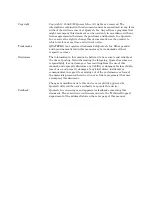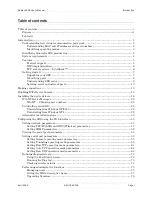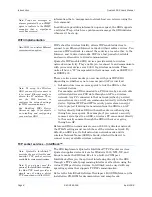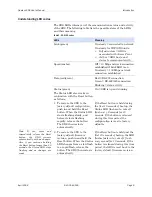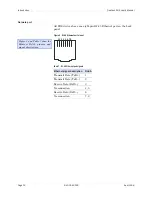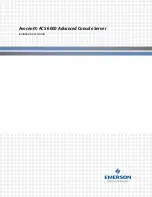
Introduction
Quatech SDS User’s Manual
Page 2
940-0183-155
April 2008
Understanding how virtual communication ports work
Single port Device Servers allow you to network individual serial
devices such as printers, simple terminals, or medical monitoring
equipment that were previously accessible only via a direct link.
According to Dataquest, a Device Server is a “specialized network-
based hardware device designed to perform a single or specialized set
of functions with client access independent of any operating system or
proprietary protocol.” In terms of your new SDS, this means that you
can connect any serial device to your network by connecting the serial
device to a serial port on your SDS and connecting the Ethernet port
on your SDS to your network.
The SDS, once it has been correctly configured, makes accessing a
single serial device such as a time clock from your network a
transparent operation. This means that a PC can perform all the
operations in the same way it would if the serial device were plugged
directly into its serial port.
A network connection allows operation of serial devices at much
greater distances than can be accomplished with a direct serial
connection. Your SDS uses the TCP/IP protocol suite for network
communications. This means that communication through an SDS
can actually be more reliable than communication over long serial
lines, which lacks the advanced error checking built into TCP/IP.
Another benefit of accessing a serial device through an SDS is that
you can monitor and manage the device remotely, even from across
the world, if you have authorization and the network connection is to
the Internet.
Understanding MAC and IP addresses and port numbers
Identifying the Ethernet (MAC) address
Ethernet address, hardware address, and MAC address are all
equivalent names for a device’s unique network address. In the case
of an SDS, the first three bytes identify the unit as a Quatech
product. The last three bytes are unique to each unit and are
assigned when the unit is released from production. Colons separate
the bytes. The following is an example of an SDS Ethernet (MAC)
address:
0 0 : 0 B : 2 8 : 1 2 : 3 4 : 5 6
Assigning an IP address
Every device that communicates over the Internet must have a
unique IP address. You can assign an IP address to your SDS by
either of two methods:
¾
Through the Installation Wizard for initial configuration
¾
Through the Web interface for reconfiguration and maintenance
Note: Quatech Device Server
technology now allows access
to individual serial devices by
anyone with access to the
network on which they are
installed.
Note: Anyone in your organization
with a PC can connect to the
serial device over the network
just as though the two devices
were directly connected.
Note: A protocol is a set of rules
that notifies a transmitting
device and a receiving device
that the other is present and
ready to exchange information,
when the exchange is complete,
and whether it was successful.
Note: You can find the unit’s
Ethernet (MAC) address on the
product information label
located on the bottom of the
unit.
Quatech’s Unique product
unique identifier identifier


